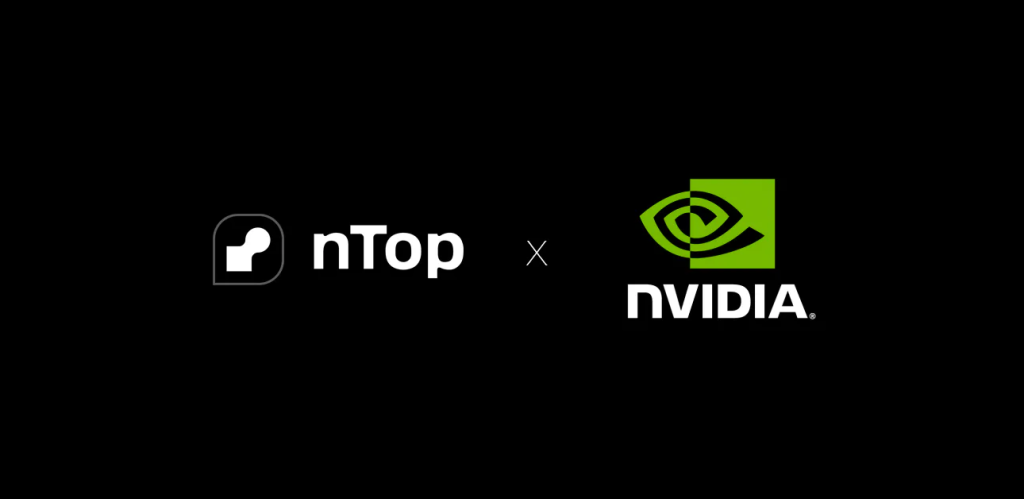Software developer nTop will integrate its computational design software with GPU manufacturer Nvidia’s ray tracing and Omniverse technologies in a new collaboration.
The partnership includes investment from NVentures, Nvidia’s venture capital arm, which will reportedly inject several millions of dollars into the company. It is hoped that nTop’s accelerated computing will allow engineering teams to shorten product time to market.
nTop 5 software automates design and optimization processing. It can be integrated with existing design, analysis, simulation tools and workflows. The partnership will combine this software with Nvidia’s OptiX rendering framework and Omniverse platform.
This integration will create new tools that will reportedly allow engineers to accelerate and better visualize their designs.
The OptiX Ray Tracing Engine is a rendering platform for creating realistic images and simulations in a virtual environment. Nvidia Omniverse allows users to develop OpenUSD applications for industrial digitalization and generative physical AI.
“Product engineering and development teams working in every industry need powerful simulation capabilities to design their work in a physically accurate manner,” commented Mohamed “Sid” Siddeek, corporate vice president at Nvidia and head of NVentures.
He added that nTop is “showcasing the benefits of accelerated computing in computational design by building incredible tools for engineering teams to design and deliver innovative products.”

nTop and Nvidia combine to streamline product development
Speaking to 3D Printing Industry at RAPID + TCT 2024, nTop CEO Bradley Rothenberg called nTop 5, the latest version of the company’s software, a “leap forward in computational design technology.”
Computational design is the process of creating algorithms that use engineering design logic to solve engineering problems. It helps engineers optimize, visualize and virtually interact with designs, and simulate real-world performance.
The software also allows users to build, run and integrate powerful computational models into their products. Previously, nTop has been adopted by Siemens Energy to convert its gas turbine engines to hydrogen power. Cobra Golf recently leveraged the software to design the lattice structures of its 3D printed golf club irons.
Elsewhere, Materialise and Nikon SLM Solutions used nTop’s platform to design a 3D printed cylinder head for Wärtsilä. The part is 60% lighter than its conventionally manufactured alternatives, integrating up to ten subsystems, reducing assembly complexity and improving cooling performance.
Computational design requires extensive computing power, with Nvidia’s graphics processing units (GPUs) already the go-to processor for nTop 5.
Through their new partnership, Nvidia and nTop’s first proof of concept will integrate the OptiX ray-tracing framework into nTop 5 to unlock more realistic renderings.
Additionally, Omniverse SDKs and APIs will integrate nTop’s implicit digital design files into the Omniverse and OpenUSD ecosystem. This will reportedly provide an immersive 3D collaboration environment where engineering teams can interact with live digital twins of parts and assemblies. Design changes made in nTop will be instantly reflected on the Omniverse platform without the need for meshing.
According to Rothenberg, the Nvidia integration has seen nTop launch a new adaptive rendering feature. This will reportedly allow teams to render extremely complex geometries into designs in seconds. Engineers can then iterate faster through design options. “In comparison, this would take other CAD systems hours, or may not even be possible,” stated Rothenberg.
According to nTop, integrating its software with Nvidia’s computing platform will allow engineers to accelerate product design and shorten product time to market. “Our goal in collaborating with NVIDIA is to provide the fastest computing solutions to our customers so they can iterate even faster through design options,” commented Rothenberg.
He added that nTop has already seen “strong interest” from customers, and teased the upcoming release of additional tools and capabilities later this year.

Take 15 seconds to tell us the impact of this news using the block below. Make sure you click submit!
3D software optimizes engineering workflow
nTop is not the only company working to optimize engineering workflows with 3D design software. Design engineering and manufacturability platform provider Cognitive Design Systems (CDS) recently unveiled Cognitive Design, its new design optimization software.
The platform targets engineers looking to optimize properties and efficiently meet customer specifications. It is designed to address complex design challenges and streamline the optimization for performance and production.
A key feature of Cognitive Design is its ability to identify geometric optimization opportunities and implement them using simulation-driven parametric design. It also allows engineers to create optimal shapes that meet mechanical requirements through variable TPMS infill, lattice infill, offset, shell, and ribbing. Moreover, topological optimization can be enhanced by adjusting the entire part geometry or focusing on specific regions to boost performance.
Elsewhere, Scott Parent, VP & Field CTO of Aerospace, Energy & Industrial at Ansys, recently discussed the company’s advanced simulation tools in an interview with 3D Printing Industry.
Ansys’ industry-leading simulation software is used by companies to predict and optimize the performance of their products in real-world scenarios. The company’s software tools enable detailed simulations across structural mechanics, fluid dynamics, electromagnetics, and thermal analysis.
Industries such as aerospace, automotive, energy, electronics, and healthcare rely on Ansys to optimize product innovation, improve product efficiency and reduce the need for physical prototypes. This reportedly accelerates development cycles, shortens time to market, and ensures higher-quality outcomes.
With additive manufacturing, Ansys’ software leverages simulations to optimize part design and support structures. According to Parent, the platform uses simulation at the front end to “determine the best shape of the part and the necessary supports, minimizing impact on the final product.” Machine learning algorithms also calibrate and optimize the 3D printing process layer by layer.
Nominations are now open for the 2024 3D Printing Industry Awards.
What does the future of 3D printing hold?
What near-term 3D printing trends have been highlighted by industry experts?
Subscribe to the 3D Printing Industry newsletter to keep up with the latest 3D printing news.
You can also follow us on Twitter, like our Facebook page, and subscribe to the 3D Printing Industry Youtube channel to access more exclusive content.
Featured image shows an engine turbine simulation in nTop 5. Image via nTop.


